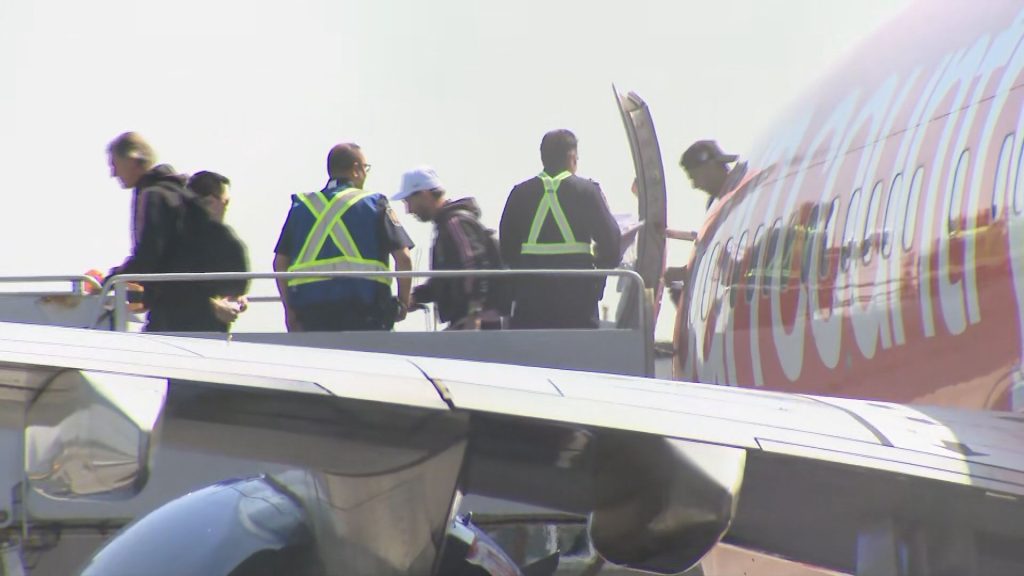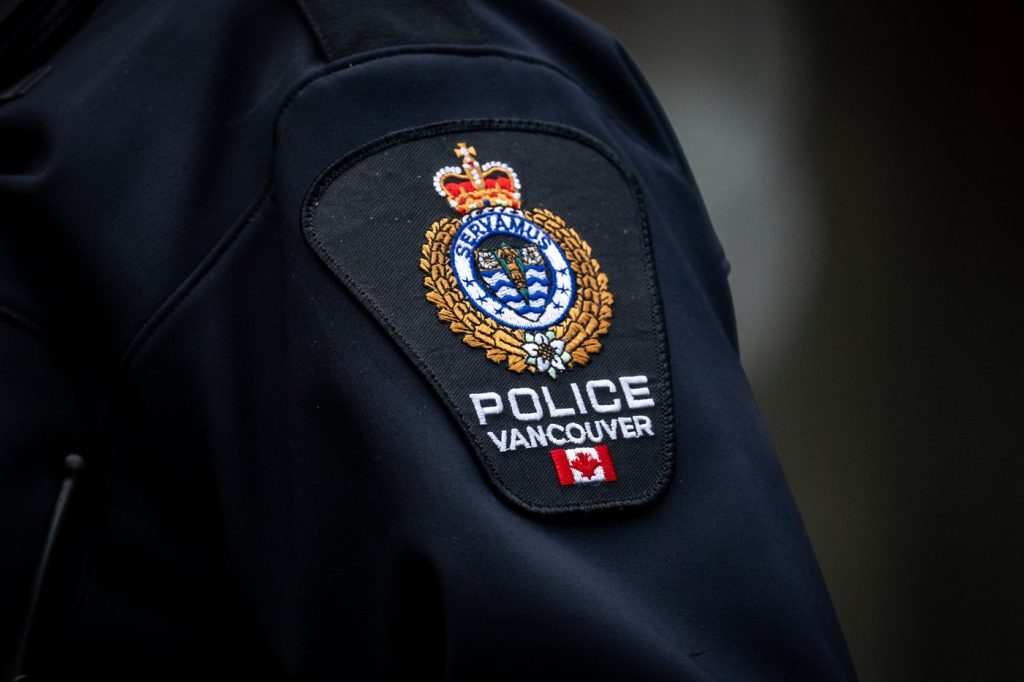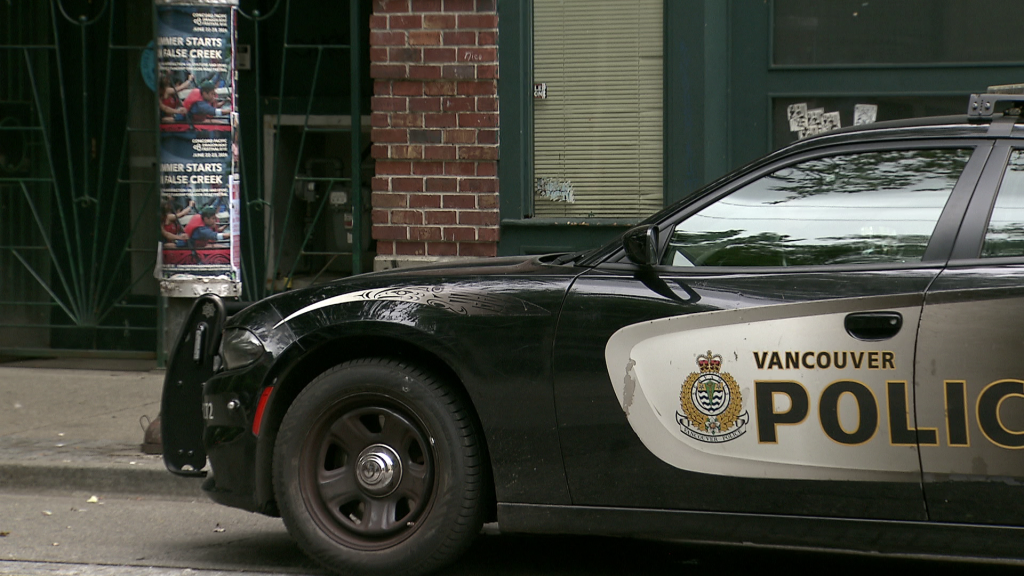Coquihalla Highway could reopen by late January to commercial traffic

Posted November 26, 2021 7:55 am.
Last Updated November 26, 2021 7:54 pm.
Work has begun on the daunting task to restore the Coquihalla Highway after the route was heavily damaged by the historic storm.
B.C. Minister of Transportation Rob Fleming says blasting has already begun in some spots, and temporary bridges are being constructed.
“We are reasonably optimistic that enough temporary repairs can be completed to allow commercial traffic on the corridor in about two months’ time by late January,” Fleming said Thursday.
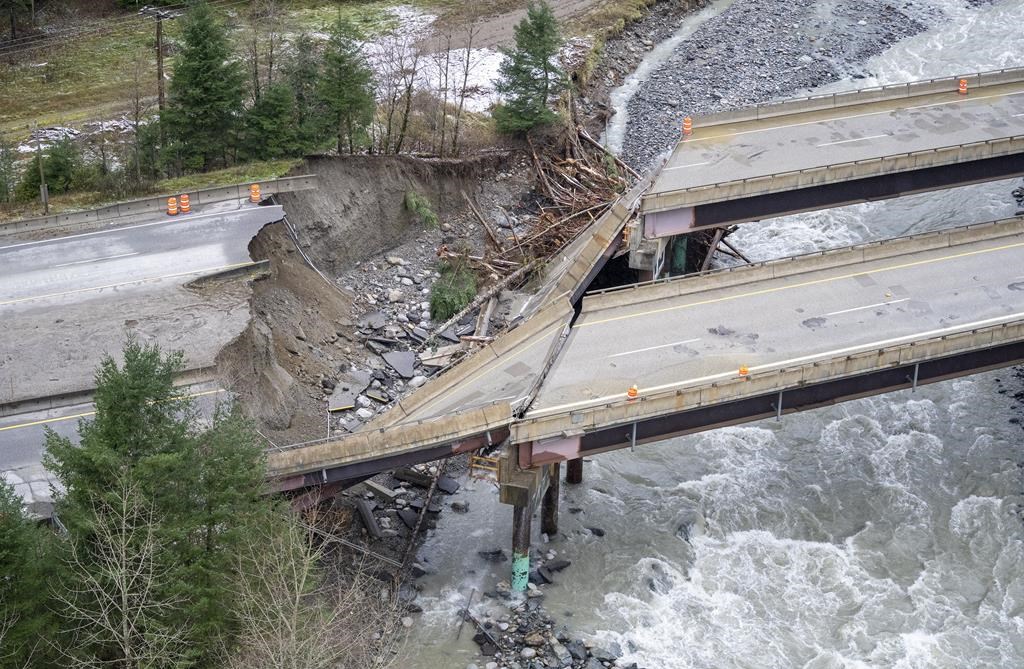
Damage caused by heavy rains and mudslides earlier in the week is pictured along the Coquihalla highway near Hope, B.C., Thursday, November 18, 2021. THE CANADIAN PRESS/Jonathan Hayward
The positive outlook on the situation could come as a surprise to many considering the route, which connects Hope to Kamloops, has been left unrecognizable by the catastrophic floods.
“We’ve all seen the images,” Fleming remarked about the shocking extent of destruction on Highway 5, including massive chunks of road completely lost into the river.
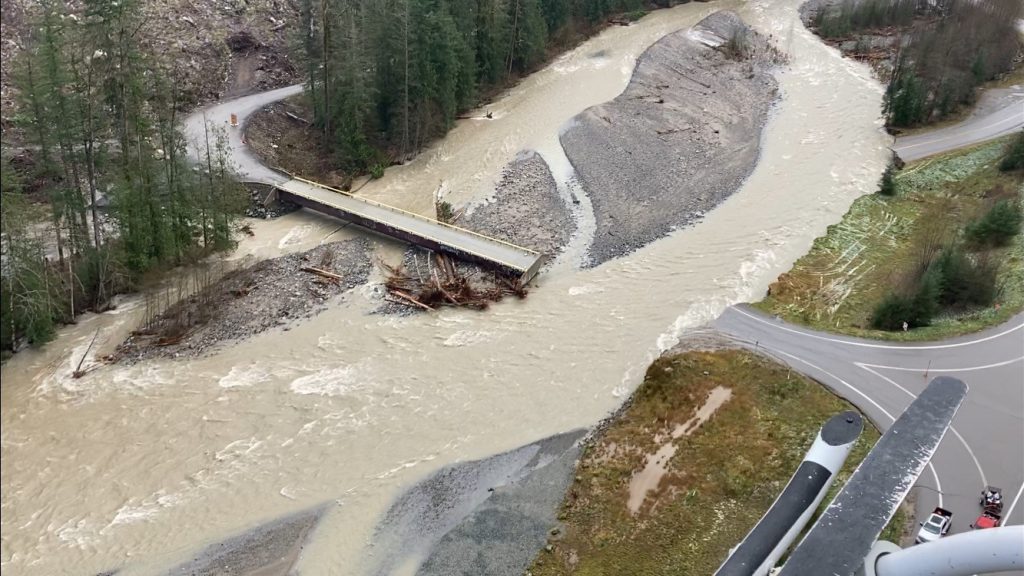
The Coquihalla Highway near the Caroline Mine exit on Tuesday November 18, 2021. (Image Credit: B.C. Ministry of Transportation)
The entire highway closed Nov. 14, after the storm brought historic rain to B.C.’s southern region.
A video taken on the day it was closed showed an early look at the water pooling on the highway between Box Canyon and Portia. In the video, shared by the B.C. Ministry of Transportation, a man is heard calling the area a “disaster waiting to happen.”

In the days that followed, the scope of the disaster was made more clear through aerial photos, although it is difficult to believe for those who regularly travel the corridor.
In all, 20 sites are damaged or completely washed away and five bridges are destroyed.
Of the 137 kilometre route, the storm has impacted 130 kilometres of it.
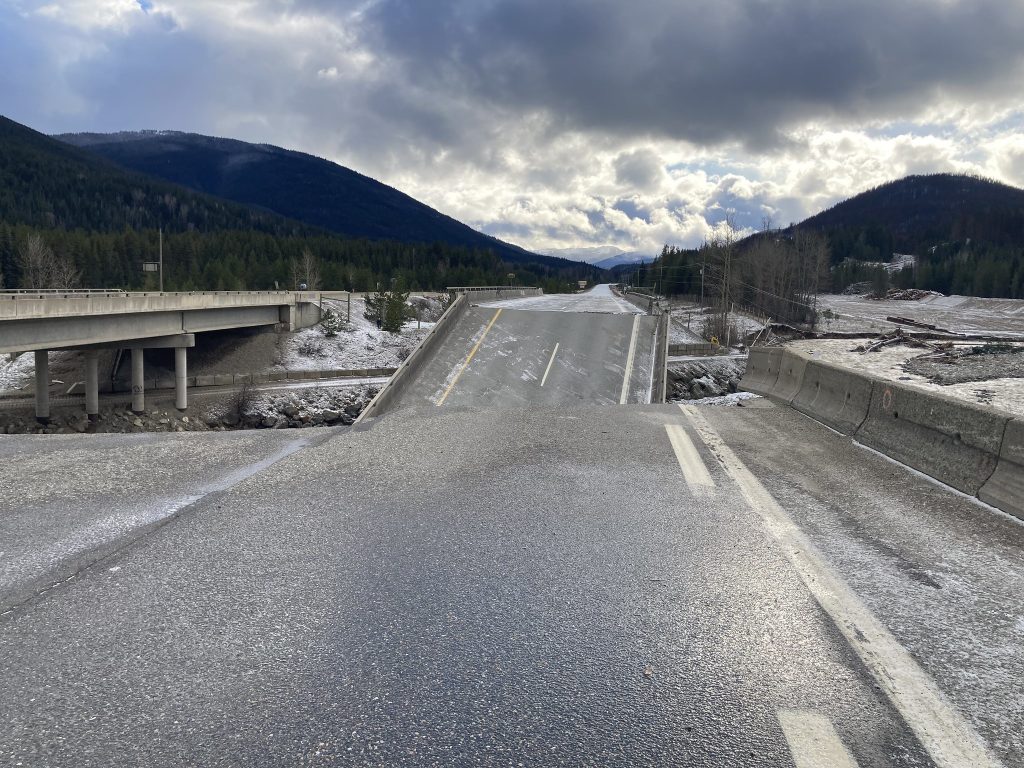
The Coquihalla Highway near the Juliet Bridge on Tuesday November 18th, 2021. (Image Credit: B.C. Ministry of Transportation)
In some areas, the swelling river has completely changed the landscape, and Fleming says crews are working to try and reroute the water into proper channels where possible.
Fleming cautions motorists to keep their expectations in check and know the route will not be the same as it once was for some time.
“When we do open up, obviously like the other highways that have been impacted it won’t be business as usual. There will be two segments each about 20 to 30 kilometres in length where the highway will have to have reduced speeds and only one lane in each direction will be possible,” he said.
He says another factor which might delay efforts to reconnect commercial trade through our province is the winter ahead.
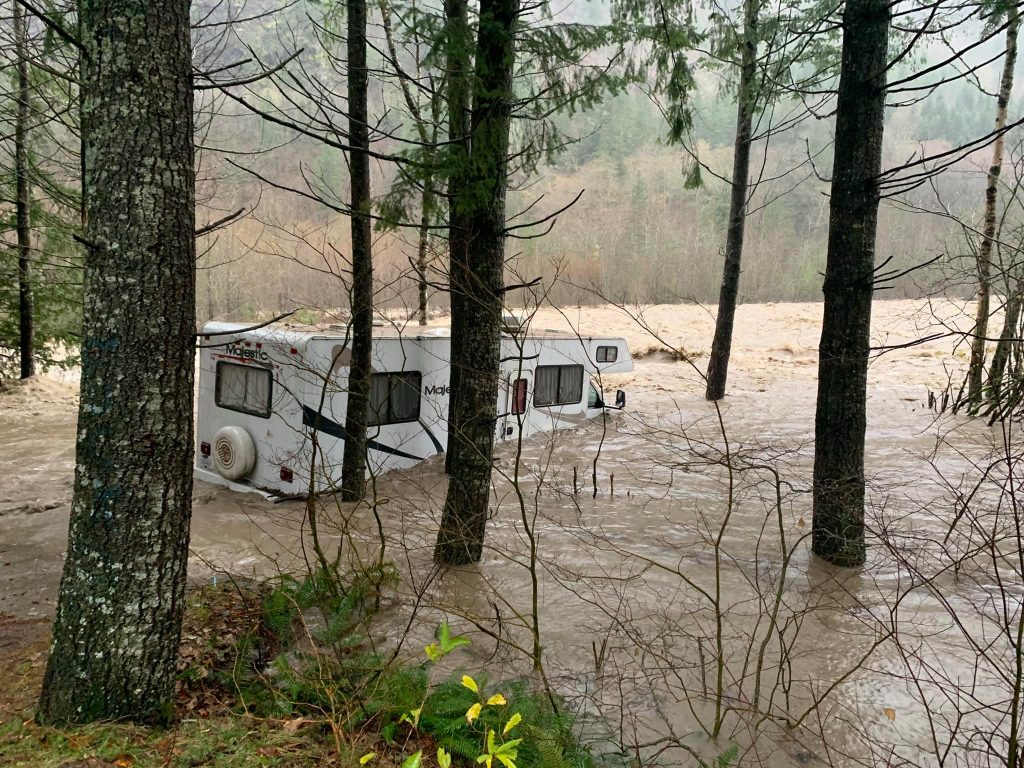
An RV is seen submerged in water near the Coquihalla Highway (Courtesy: Jeremiah Sterbel/Facebook)
“I do have to caution that the weather will be a factor and a key consideration in determining whether we can reach that target,” he said.
“If there is something fortunate about the Coquihalla damage it’s that areas that experience the most challenging winter conditions were not as impacted and will have the same road standard as before the storms,” he added
The Coquihalla Summit, Snow Shed Hill,and Larsen Hill were not destroyed by the storm.
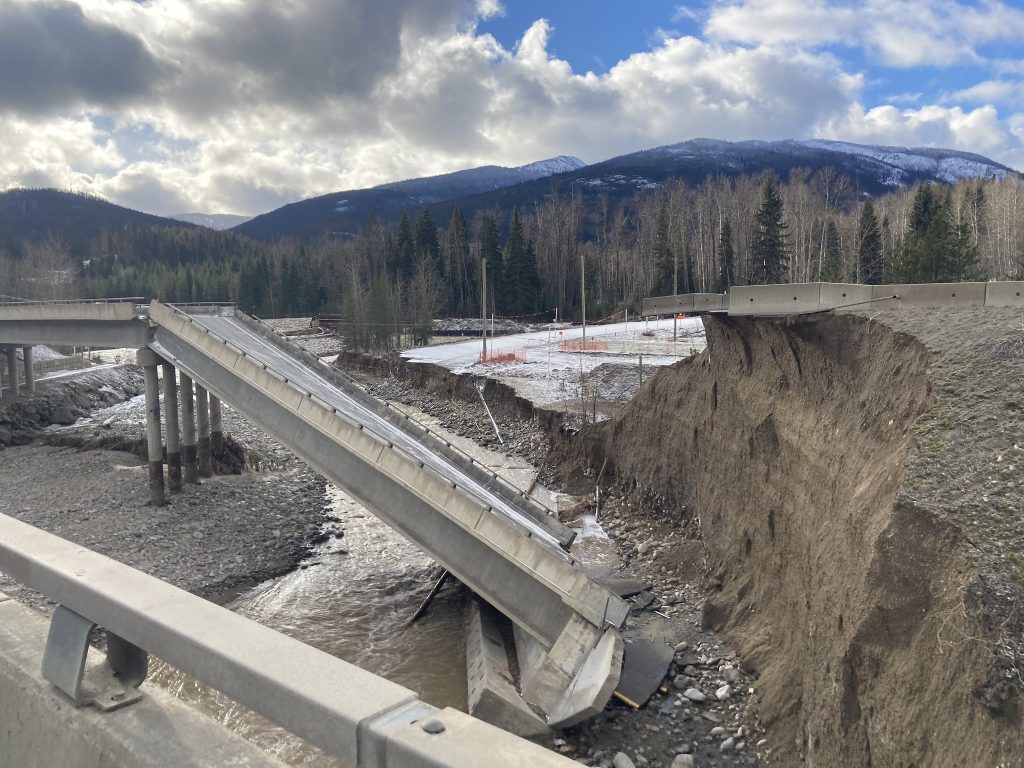
The Coquihalla Highway near the Juliet Bridge on Tuesday November 18th, 2021. (Image Credit: B.C. Ministry of Transportation)
Commercially crippling
When construction began on the Coquihalla in the late 1970s, creating a shortcut through a steep mountain pass and hill country was considered an engineering feat.
The province was motivated to create the four-lane route as a quicker way to travel in and out of the Lower Mainland and ease congestion on the aging Highway 1.
By the time the massive undertaking was complete in 1987, the total cost was $955 million. The cost to fix it has not been determined.
Related Articles:
-
Gravity of disastrous flood on B.C. crops, livestock loss unfolds as province prepares for storm
-
Highway 1 through Abbotsford reopened
An estimated 3.4 million trips are taken each year through the corridor and more than 700,000 of those trips are by commercial trucks.
Essential routes are open in other areas of B.C., to connect east to west, but they come with significant delays, compounding already-strained supply chain issues.
When the Coquihalla Highway reopens, it’s expected to ease some of those burdens on other routes, especially Highway 3 and Highway 7, and bring back some economic recovery to the province.
With files from Denise Wong
